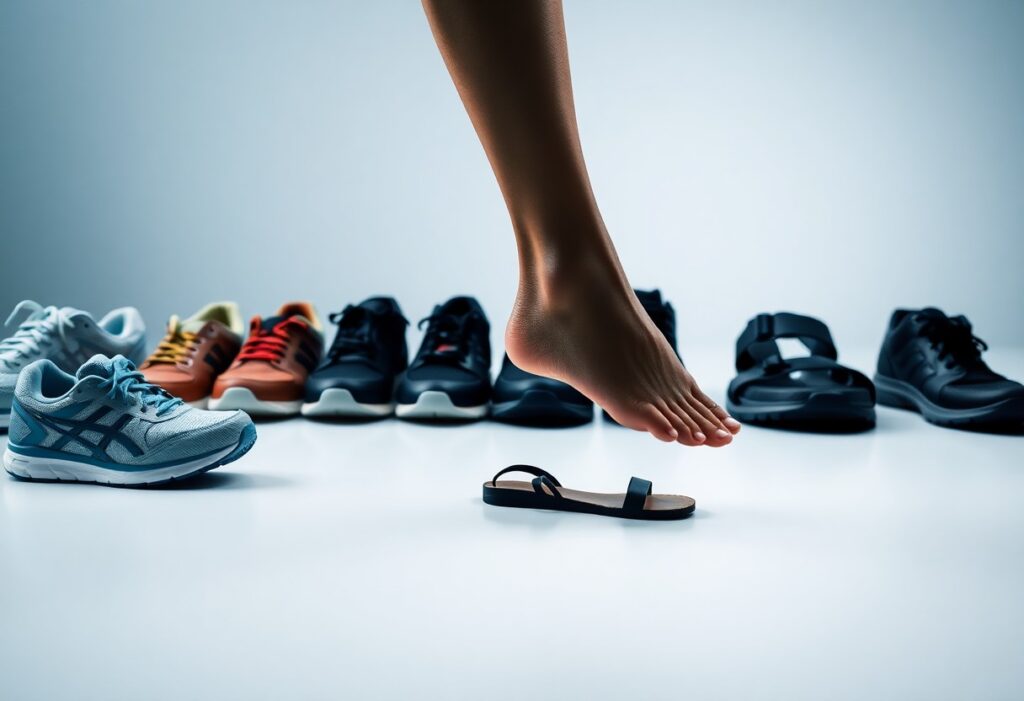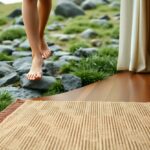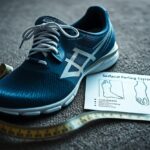
As you embark on your daily journey, the selection of footwear you choose can profoundly influence your foot health. Many individuals mistakenly believe that shoes with enhanced cushioning and support are the best solutions for foot discomfort. However, traditional footwear often inflicts more harm than good. Dr. Alissa Kuizinas, a highly regarded podiatrist from Massachusetts, advocates for the use of barefoot shoes or minimalistic footwear, asserting that these options promote stronger and healthier feet. By selecting shoes that allow your feet to operate naturally, you significantly reduce the risk of developing foot issues and enhance your overall foot wellness.
Understanding How Conventional Footwear Impacts Foot Health Negatively
While traditional shoes may offer temporary relief from foot pain, they frequently exacerbate existing conditions and introduce new complications, as emphasized by Dr. Alissa Kuizinas. She highlights that the $133 billion shoe industry often prioritizes aesthetics and profit margins over real foot health, resulting in designs that can constrain and weaken your feet over time. This reliance on conventional footwear can create a harmful cycle that ultimately undermines your foot health, leading to chronic issues that could have been avoided through smarter design choices.
Analyzing the Shoe Industry's Inadequate Solutions for Foot Health
The core of this dilemma lies in the flawed methodologies of the shoe industry regarding foot health, which often emphasizes adding excessive cushioning, support, and rigid construction instead of addressing the root causes of discomfort. This misguided approach can foster a false dependence on shoes that may actually harm your foot health over time, paving the way for complications that could have been prevented with more effective design principles.
Identifying Design Flaws in Traditional Footwear
Many conventional shoe designs feature narrow toe boxes, rigid soles, and excessive cushioning that can hinder natural foot movement, leading to weak and dysfunctional feet. Dr. Kuizinas emphasizes that footwear should shield your feet from external elements rather than restrict their natural movement. The ideal shoe design should center on natural foot function and minimalist features, such as wider toe boxes, flexible and flat soles, and minimal cushioning, to foster optimal foot health.
By incorporating barefoot shoes or minimalistic footwear into your life, you can effectively fortify your feet and enhance your overall foot well-being. Dr. Kuizinas promotes the ethos of utilizing as little shoe as possible, allowing your feet to function naturally and move freely, which is crucial for maintaining optimal foot mechanics.
The Critical Role of Allowing Natural Foot Movement for Optimal Health
Footwear that limits your foot's natural movement can lead to a myriad of foot problems and discomfort. It is essential to evaluate how your shoe selections affect your overall foot health and comfort levels, enabling you to make informed footwear decisions.
Assessing the Influence of Footwear on Foot Mobility
To gain a comprehensive understanding of how shoes affect your foot's mobility, it’s crucial to scrutinize the specific designs and characteristics of your selected footwear. Traditional shoes often incorporate cushioning and support features that can, in reality, impede your foot's natural movement, contributing to weak and dysfunctional feet over time. This limitation can hinder your feet from developing the necessary strength and flexibility to thrive in daily activities.
Recognizing the Advantages of Natural Foot Mobility
The advantages of allowing your feet to move naturally are extensive. Strong feet are vital for overall foot health. By opting for minimalistic shoes or barefoot footwear, you empower your feet to operate as they were intended, fostering strength and resilience throughout your bodily movements.
Movement is fundamental for developing strong feet. When restricted by conventional footwear, you risk encountering various foot issues and discomfort. Conversely, embracing minimalistic shoes or barefoot options can significantly boost your foot health by facilitating natural movement and encouraging strength-building. By carefully selecting your footwear, you can minimize your risk of developing foot problems and enhance your overall foot wellness.
Exploring the Concept of Functional Footwear for Improved Health
Grasping the concept of functional footwear is crucial, as these shoes prioritize both foot health and natural movement. Functional shoes are deliberately designed to allow your feet to function as intended, eliminating the need for excess support or confinement that traditional shoes often impose.
Defining Functional Footwear and Its Essential Characteristics
Through extensive research and experimentation with various shoe styles, you'll discover that functional footwear possesses distinct characteristics, such as a wide toe box, flat and flexible soles, and minimal cushioning and support. These features allow your feet to move freely and naturally, promoting stronger and more capable foot mechanics.
Exploring the Benefits of Functional Footwear for Enhanced Foot Health
Choosing to wear functional shoes presents an array of advantages, including increased foot strength, a reduced risk of injury, and improved overall foot health. These shoes are designed to enable your feet to function as they were intended, resulting in stronger feet and enhanced balance in your everyday activities.
Functionally designed footwear is tailored to support your feet without imposing unnecessary restrictions, allowing them to move and flex naturally. This design philosophy encourages optimal foot health and decreases the likelihood of developing foot ailments. By opting for functional shoes like barefoot shoes or minimalistic options, you actively support healthy foot function and mitigate the risk of foot pain and injury. Transitioning to functional footwear may necessitate a gradual adjustment period, but the long-term rewards for your foot health are invaluable.
Key Features to Seek in Functional Footwear for Optimal Health
To achieve the best possible foot health, it is crucial to look for shoes that encompass specific features. Key attributes to consider include:
- Wide toe box
- Flat and flexible soles
- Minimal cushioning and support
Being aware of these characteristics will greatly assist you in selecting shoes that promote healthy foot function and provide the necessary support.
The Importance of Wide Toe Boxes and Flexible Soles in Footwear
A critical feature of functional footwear is a wide toe box, which allows your toes to spread naturally. This design helps to prevent toe jamming and other discomfort-related issues that could lead to chronic foot pain and complications down the line.
Understanding the Need for Minimal Cushioning and Support in Footwear
In addition to a wide toe box, functional shoes should feature minimal cushioning and support. This design element enables your feet to move naturally while simultaneously strengthening foot muscles, thereby reducing the risk of foot issues.
It is essential to underscore that minimalistic footwear, such as barefoot shoes, can significantly enhance your foot health by allowing your feet to function freely. By selecting shoes with minimal cushioning and support, you can fortify muscle strength in your feet and decrease the likelihood of injuries. This strategic choice not only enhances your overall foot health but also reduces the chances of experiencing chronic pain. Therefore, prioritizing footwear that allows your feet to move naturally without excessive cushioning or support is paramount.
Transitioning to Functional Footwear: A Comprehensive Guide
Having recognized the significance of functional footwear, it’s time to begin your transition. Contrary to the prevalent belief that more cushioning and support lead to greater comfort, you should focus on minimalistic shoes or barefoot shoes that facilitate your feet's natural functioning.
Practical Tips for a Seamless Transition to Functional Footwear
Despite initial reservations, start incorporating functional shoes into your daily activities by adhering to these practical suggestions:
- Commence with short walks and gradually extend your distance
- Select shoes that feature a wide toe box and flat soles
- Opt for minimal cushioning and support
The key is to provide your feet with ample time to adjust to the new shoes while simultaneously strengthening the muscles in your feet.
The Necessity of Patience During Your Transition to Functional Footwear
Transitioning to functional footwear requires patience and a measured approach. Shoes that are excessively minimal can cause discomfort and pain if your feet are not accustomed to them. Gradually acclimating your feet to the new footwear is essential for a successful transition.
Footwear such as barefoot shoes or minimalistic shoes can profoundly benefit your foot health, but it is crucial to introduce them gradually. Overuse or improper sizing can result in injuries or persistent discomfort. The ultimate objective is to strengthen your foot muscles while improving your overall foot health, so being patient is vital; rushing through the transition is inadvisable. The benefits will be significant; anticipate improved balance, reduced pain, and stronger feet.
Enhancing Foot Health and Strength with Proper Footwear Choices
Even in a culture where shoes with excessive cushioning and support dominate, you can cultivate strong and functional feet by judiciously selecting your footwear.
The Interconnection Between Foot Strength and Overall Well-being
In addition to various health factors, foot strength plays a vital role in your overall well-being, influencing your balance, posture, and movement capabilities.
How Functional Footwear Contributes to the Development of Strong Feet
Functionally designed shoes characterized by a wide toe box, flat and flexible soles, and minimal cushioning are instrumental in developing strong feet, as they facilitate natural movement.
Indeed, wearing functional shoes or barefoot shoes can greatly assist in fortifying muscle strength in your feet and enhancing your overall foot health. By permitting your feet the freedom to move and function naturally, you can minimize the risk of foot problems while optimizing your balance and stability. As you shift to minimalistic shoes, you can expect improvements in your walking technique and overall sense of well-being.
By proactively managing your foot health, you can select shoes that support your feet's natural functions rather than hinder them. Choosing barefoot shoes or minimalistic options that enable your feet to operate naturally will foster strength and stability over time. Begin your journey by seeking footwear with a wide toe box, flat and flexible soles, and minimal cushioning and support, while being patient as you transition to a more natural walking style.
The Article A Podiatrist’s Guide to How Shoes Affect Your Foot Health appeared first on My Shoes Finder
The Article How Shoes Impact Your Foot Health: A Podiatrist’s Insights Was Found On https://limitsofstrategy.com
The Article Shoes and Foot Health: Insights from a Podiatrist First Appeared ON
: https://ad4sc.com









Comments are closed